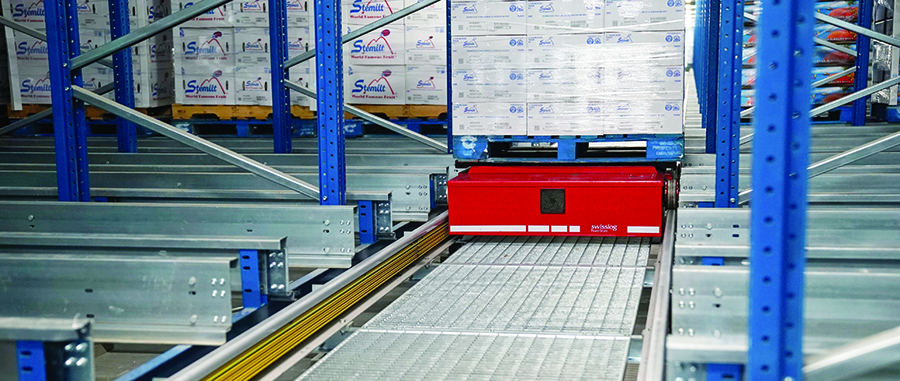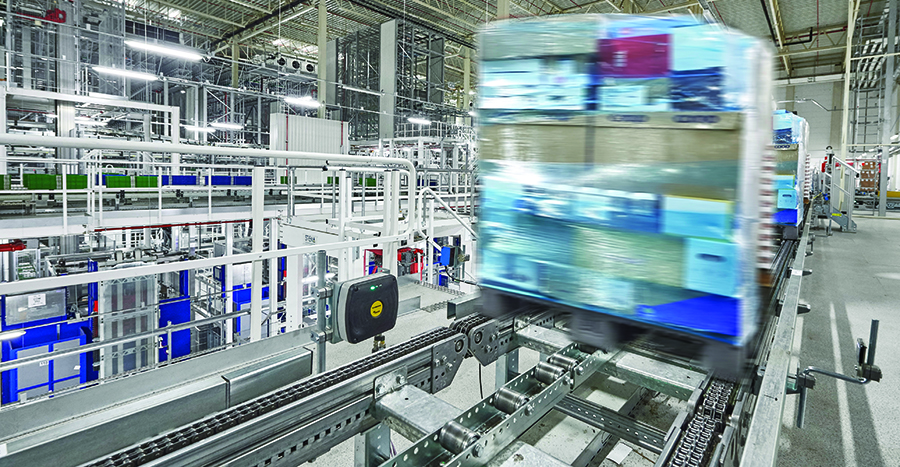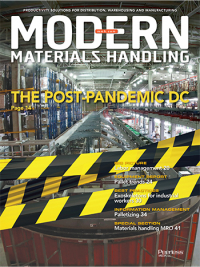Labor management in an automated world
Automation is not all about equipment. People are just as important to the long-term success of a major capital expenditure. This affects everything from the work people do to how they interact with each other.
Making the move from a mostly manual operation to one dominated by automation can be daunting. And when people who have been through it smile at that comment, others who have not often think it’s all about the equipment. It’s not. Just ask the people at Norway’s largest grocery cooperative Coop.
Automation success “requires a management, organization and cultural revolution,” says Ove Bjorgum, director of logistics operations at Coop, one of the most automated and complex grocery distribution centers in the world. Prior to building a highly automated DC in Jessheim, Norway, Coop relied primarily on labor-intensive conventional handling and processes (Modern Materials Handling, December 2019).
Unfortunately, not every company shares Coop’s insight. Too many don’t understand early enough just how much change automation brings to a facility’s processes. And, they don’t understand the impact that this change has on people, how they work and interact.
“A lot of people just don’t appreciate the magnitude of the change,” says Terry Krantz, Swisslog’s vice president of sales and design, consumer goods in North America. “It’s one thing to install new equipment but something else again to instill new behaviors and culture,” he adds. “Being successful with automation requires just as much investment in those new behaviors and culture as in the equipment, systems and software.”
What automation changes
Krantz’ comment actually sounds like an understatement when you think of what exactly changes with automation.
Before: Lift trucks unload over-the-road trailers, delivering loads to a range of locations. Each lift truck may be directed by a warehouse management system, but the driver has ultimate say in how and when the load gets to its destination. The truck may even stop along the way for any of a number of reasons from opportunity charging to a driver’s 10-minute break.
After: Unit loads of inventory feed onto a conveyor for direct delivery to various destinations under software control. An automated storage and retrieval system automatically puts the load away and later retrieves it. Automatic guided vehicles carry loads to picking stations or feed high-speed sortation systems. There is no pause along the way.
Quite simply, the manual operation has enormous flexibility and give. The automated process has none. Before, a 10-minute delay was generally inconsequential. There just wasn’t tight linkage. After, there probably isn’t room to accommodate a 10-second delay. Everything is linked tightly.
Or, as Christian Dietl, CEO of Witron Service, puts it, “with automation everything is connected like a production line. Receiving is tied to replenishment to picking to packing to shipping.”
Dietl was a key person in making Coop successful with its new Witron automated systems. “As does everyone else starting up automation, they went from a world measured in the number of pallets to one where the process to service orders reigns supreme,” he adds.
“Automation removes variability in every process. One of automation’s attractions is its precise control of processes by connected technologies built to deliver inventory consistently,” says Brad Anderson, Fortna’s vice president of global operations design.
Given how automation works, it would be almost impossible not to change behaviors and culture when moving from manual operations to automation. In fact, Coop credits the success of its automation to this: “One of the first things we did was to acknowledge that the business culture was important,” says Bjorgum.
Change management
As Krantz points out, the best way to effect workforce changes depends entirely on the culture of the company. Coop did what worked best for its workforce while others will adapt changes to theirs.

Automated systems are connected like a production line, where the process to service orders reigns supreme.
At its core, however, the move from manual operation to automation is a change management project, says Jim Barnes, CEO of enVista. “Organizations don’t change, individuals do,” he adds. “And, you can’t have a new beginning if you don’t leave the past.”
Barnes goes on to explain that it all comes down to WIIFM, or what’s in it for me. He recommends making it clear upfront to associates at all levels why manual processes did not support the company’s or facility’s goals. However, automation will make those goals possible. “Instead of selling the problems of old, just highlight them and sell the solution,” says Barnes.
He borrows from the Prosci goal-oriented change management model called ADKAR:
- Awareness (of what’s happening),
- Desire (to change),
- Knowledge (of what’s new),
- Ability (to effectively use what’s new) and
- Reinforcement (through education to understand the change and improve it).
“Those are the five critical milestones in change management projects of all types,” says Barnes.
Getting started
Working through the change management of automation requires several elements to be in place.
All of the experts interviewed for this piece agreed that the change management process starts early in the planning stages of the automation project.
“This is not a matter of two days of training just before go live,” explains Krantz. “You want key people involved during the specification phase of the project. And, they stay with the development team every step of the way. It’s critical to maximize the exposure of these core people to the project and ensure they understand it through and through.”
He goes on to say they need to understand the principles of the system and how to work with it. “You can’t give a conveyor a pep talk,” Krantz adds.
“Part of the learning curve with automation is to learn how to run it at top speed and plan work around it,” says Bryan Jensen, chairman and executive vice president at St. Onge. “That isn’t intuitive,” he adds.
In addition to the core team, Jensen is a strong advocate of bringing in key leaders from previous automation startups at a company to advise and guide the new startup team. “You don’t want the guys from corporate. You want peers of the people actually running the new equipment,” he adds. Classroom education on the equipment is also valuable to the new startup team.
“That advisory team is so important because all the people new to automation know is manual. Automation is a completely different precept. You can’t flex throughput because the machine will not go any faster,” Jensen adds.
It’s all a matter of leaving the past for the new beginning.
Lots of changes to address
Anderson of Fortna points out that automation requires more coordination among leaders in the facility. That ranges from the general manager to operational supervisors.
“People have to be nimble to work with automation. They have to model each day how they are going to process orders knowing that they are dealing with unknown volumes, mixes and timing,” Anderson says.
The people who are best suited to leading in this environment do not live by a list of tasks, he continues. Instead, they need to be very dynamic and able to embrace change as the day goes on. Modifying on the fly is a necessary ability of a strong operations team.
“Automated systems work best when strong daily planning is in place,” says Krantz of Swisslog. “Planners need a strong insight into the principles of the operation and an appreciation of the system’s limitations and bottlenecks. Winners here are the ones who do this and actually get even more from the system than it was designed to deliver.”
This planning also requires both a greater interdependency of associates and higher skills, says Barnes.
At Coop, managers stopped being the experts on the work that needs to be done. They now rely on the operators to be the experts while the managers are valued for their leadership skills.

Even when you can’t see people on the floor, culture is the top priority of an automation organization.
And, nowhere is there a need for higher skills than in maintenance technicians, explains Dietl. Techs have to be highly trained to identify the root cause of problems and fix them as quickly as possible to have the least impact on the facility’s throughput.
“The maintenance department has to work closely with operations to ensure minimal impact on machine uptime. The two can’t be independent of each other as many have been in the past,” adds Dietl.
And, still more changes
As Anderson of Fortna points out, fundamental shifts are happening in DC culture lately. It is now seen as a competitive advantage and often a differentiator, especially in the world of e-commerce. Automation enhances that shift and its relative importance.
“Management is what creates culture,” says Jensen. “Everyone at all levels has to set egos aside and work together to have a successful facility.”
That said, operations should not dominate the automation culture. It is a co-partner, not the king it once was.
“Culture is the top priority of an automation organization,” says Krantz. “Both planning and operations have to be on an even keel. One can’t tell the other how to operate. And when there is a problem, it needs to be addressed by all right now, not pushed off to the side until sometime in the future.”
Perhaps the last word here belongs to Coop. A successful shift to automation requires many changes. Of everyone. Teamwork and communication are key to success along with a drive for continuous improvement. Miss on any of the key management, organizational and cultural touchpoints, and that automated system will most likely be an expensive underachiever for years to come.

Article Topics
Automation News & Resources
Walmart chooses Swisslog AS/RS and software for third milk processing facility Lucas Watson appointed CSO for Körber’s Parcel Logistics business in North America 60 Seconds with Bob Trebilcock, outgoing executive editor, Modern Materials Handling Kathleen Phelps to join FORTNA as chief financial officer Coles automates grocery distribution in Australia 2024 Intralogistics Robotics Survey: Robot demand surges Warehouse automation extends life of cheese DC by a decade More AutomationLatest in Materials Handling
Registration open for Pack Expo International 2024 Walmart chooses Swisslog AS/RS and software for third milk processing facility NetLogistik partners with Vuzix subsidiary Moviynt to offer mobility solutions for warehouses Materials Handling Robotics: The new world of heterogeneous robotic integration BSLBATT is looking for new distributors and resellers worldwide Lucas Watson appointed CSO for Körber’s Parcel Logistics business in North America Hyster recognizes Dealers of Distinction for 2023 More Materials HandlingAbout the Author
Subscribe to Materials Handling Magazine

Find out what the world's most innovative companies are doing to improve productivity in their plants and distribution centers.
Start your FREE subscription today.
April 2024 Modern Materials Handling

Latest Resources












